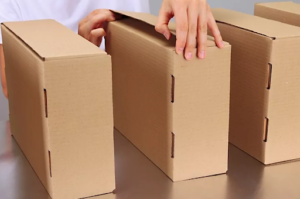If you’re looking to go green with your packaging, there are some great options out there that do not involve expensive new equipment or large-scale changes to your business model. All of these are options that any small business can consider in order to reduce their carbon footprint and go green without breaking the bank in the process. In this article, we Atlantic explore eight of the most cost-effective eco-friendly packaging alternatives for your shipping needs.

Biodegradable Air Pillows
A great eco-friendly packaging alternative is air pillows, which can be made from recycled materials. Not only will these save you money on shipping, but they’re more environmentally friendly. All you need to do is buy several small styrofoam peanuts and fill an empty tube with them. Once you’ve filled a tube or plastic baggie, seal it at both ends before affixing it onto your package using tape or a staple gun.
Corrugated Bubble Wrap
When you’re shipping fragile items, bubble wrap is your friend. The air pocket between each bubble helps protect your item from bumps and bangs during transit. Here’s how to make it yourself: get a roll of Bubble Wrap, cut it in half (be sure to keep all of your pieces together) and then lay out one piece of bubble on top of another and push them together with a hair dryer.
Mushroom Packaging
Biodegradable, compostable packaging is a great option for shipping your products and can help with branding. You can even integrate edible mushrooms into your package design. Mushrooms, when left to grow, will continue to absorb any material they are placed upon. Place a bag of rice or coffee grounds onto a log or piece of bark and let it sit in your refrigerator for a week—when you pull it out, there will be mushrooms growing off of it! Mushroom packaging is an innovative way to ship organic items.
Cornstarch packaging
Cornstarch is an organic substance that can be used as a biodegradable plastic. It’s made from corn and has many industrial uses. When it comes to sustainability, cornstarch isn’t ideal. It is highly processed and requires lots of energy, so isn’t considered a green product. However, it does have some good attributes—it’s entirely biodegradable, compostable and renewable.
Biodegradable packaging peanuts
Made from used coffee grounds, these biodegradable packing peanuts are a safe and eco-friendly alternative to their petroleum-based counterparts. As an added bonus, they’re capable of absorbing moisture and will help protect your items during shipment.
Recycled cardboard and paper
The manufacture of new products from recycled materials is a form of green packaging. Not only does it keep old or used goods out of landfills, but using recycled paper and cardboard also keeps trees out of chippers. Plus, by choosing recycled materials, you can cut down on your carbon footprint and show off your eco-friendly side. As consumers have become more environmentally aware, they’ve begun to reward companies that offer green or eco-friendly choices.

Seaweed packaging
Seaweed is a natural product that can be used in many ways, including food, animal feed and medicine. However, one entrepreneurial company has another application for kelp: The material is being used as a biodegradable alternative to plastic in some packaging products. Kelp is so versatile and easy to use because it doesn’t need oxygen or light to grow.
Eco-friendly plastic and recycled plastics
After you’ve done your homework on biodegradable and compostable plastics, eco-friendly plastic becomes a viable option for your business. These plastics are made from non-petroleum products like corn or sugarcane, which makes them 100 percent biodegradable and recyclable, although not as easily as petroleum-based plastics. They’re not ideal for use in food products but work well for retail or other small goods that can be recycled or repurposed after use.

